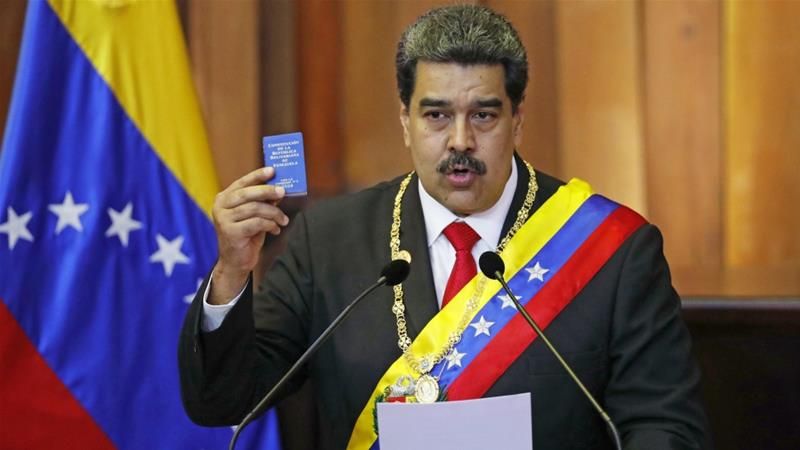Venezuelan Presidential Crisis
Apr 17, 2019 • 32 views
Venezuela, the nation with one of the highest biodiversity, ranging from the Andes in the west to the Amazon river basin in the south; the country that is one of the world’s leading oil exporter, having one of the biggest oil reserves. Right now, however, the country is more known for reeling under one of its biggest crisis it might have ever faced, arising from concerns regarding the position of the President, and who actually presides over this throne. The crisis was set in motion once the Presidential elections took place in May 2018, and the incumbent Nicolas Maduro (see image below) once again was voted to power. This election was strongly criticized as having an irregular electoral schedule, while also blocking out the opposition in order to influence results. This also led countries around the world to be divided into warring factions- one supporting Maduro and one in strong opposition.

Maduro was the right hand man of his predecessor Hugo Chavez, with media outlets describing him as Chavez’s most capable administrator. Starting his life as a bus driver, he quickly rose to prominence, becoming a leader of the trade union, ultimately ending up as a vital cog in Chavez’s wheels. He was the Foreign Affairs minister from 2006-2013, while he was made the second-in-command in 2012. Upon Chavez’s death in March 2013, he was elevated to the Presidential position. Almost immediately, he had to tackle the issue of food shortages in the country, which had taken shape during Chavez’s reign in the 90s, owing to economic mismanagements and currency control policies, as well as high inflation rates, while there was an even bigger issue of humanitarian crisis owing to the decreased standards of living of the people. Back in 2016, even during the peak of the crisis, the Maduro administration adopted a “wait-and-watch” policy, hoping that oil prices would become favourable, a move that was unsustainable. Another issue was the rising unemployment, as well as the constant rioting on the streets of the nation. Hyperinflation reigned supreme.
That is why, the 2018 elections would have been critical as to the future of the country. However, the administration rigged the elections in their favour, leading major Latin American and European countries, along with the U.S., in illegitimating his position, while recognizing his opposition Juan Guaido (see image below) as the acting President.

Countries in support of Maduro’s re-election include Turkey, China, Russia, as well as some Caribbean nations. On January 13 this year, Guaido was detained by the Bolivarian Intelligence Service, but released after just 45 minutes. The Government’s claims of no involvement in his detention led Guaido to proclaim that the Government had lost control of the forces. February witnessed the arrival of humanitarian aid in terms of food and medicine, however, the Maduro administration barred U.S. from providing aid, believing it to transform Venezuela as its puppet. March witnessed two massive electrical blackouts, causing a number of deaths. While Maduro claimed that this was a U.S. ploy to strip him of power, Guaido believed that this was the result of years of inefficiency and corruption in the administration. This month has witnessed the arrival of Red Cross aid, with focus on healthcare, migration crisis, prisons, and sanitation conditions.
With more than 50 nations siding with Guaido, it seems that the path ahead is clearer, aided by the fact that Guaido’s envoy Gustavo Tarre was accepted as Venezuela’s ambassador. However, even if Maduro leaves office, the road ahead will be highly challenging for the country.

